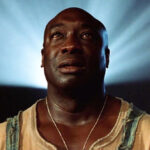For those who appreciate cinema that challenges viewers to think, interpret, and draw personal conclusions, “John And The Hole” offers a compelling, albeit unsettling, experience. This film operates as a modern parable, reminiscent of Haneke’s style, presenting two interwoven narratives, with the primary focus, as the title suggests, on John and his actions.
“John and the Hole” stands out with its high production quality, a commendable cast including Michael C. Hall, and skillful direction and cinematography. The movie’s soundtrack also deserves praise; it effectively utilizes modern synth elements to build suspense without becoming overwhelming, a delicate balance often missed in contemporary thrillers.
It’s surprising to see the film met with harsh 1-star reviews criticizing the premise as unrealistic or the ending as nonsensical. Such criticisms seem to miss the film’s deeper exploration of contemporary adolescence and parental awareness. Perhaps the film subtly critiques a societal detachment, particularly within affluent families who might have the resources for psychological intervention yet overlook subtle cries for help. The movie hints at a world where emotional disconnect can exist even amidst material comfort, a point relevant to our times. This perspective touches upon the often-unacknowledged realities of upper-middle-class life, far removed from the everyday struggles of many.
Shifting from societal commentary back to cinematic evaluation, “John and the Hole” arguably finds its ideal home outside mainstream theaters, perfectly suited for the art-house circuit. Its oblique narrative and deliberate pacing may not resonate with all viewers seeking straightforward entertainment.
However, for those inclined towards thought-provoking cinema, “John and the Hole” proves to be both captivating and unsettling. It intentionally deviates from realism, instead offering a symbolic exploration into the psyche of modern youth and the ambiguous transition to adulthood. The film’s ability to hold attention and provoke thought, without resorting to cheap thrills, justifies a solid 6-star rating for its category. Viewers should approach it with tempered expectations, understanding it’s an art-house piece, not a typical blockbuster. Fans of nuanced, symbolic filmmaking will likely find significant merit in “John and the Hole.”
Addressing the polarizing ending, it seems many viewers struggle to interpret it beyond a literal, realistic lens. It’s crucial to understand that the conclusion, much like the film itself, leans into the absurd, cloaked in a veneer of upper-middle-class normalcy. This deliberate absurdity is amplified by the film’s polished aesthetic and seemingly uneventful narrative. The parallel storyline serves to further highlight the main plot’s inherent ridiculousness, viewed from a mature, rational perspective. Ultimately, “John and the Hole” can be interpreted as an adolescent fantasy, where “adulthood” is reduced to a series of mundane, repetitive actions, devoid of profound purpose or ethical direction, and within the detached bubble of modern bourgeois existence, often lacking real-world consequences.


